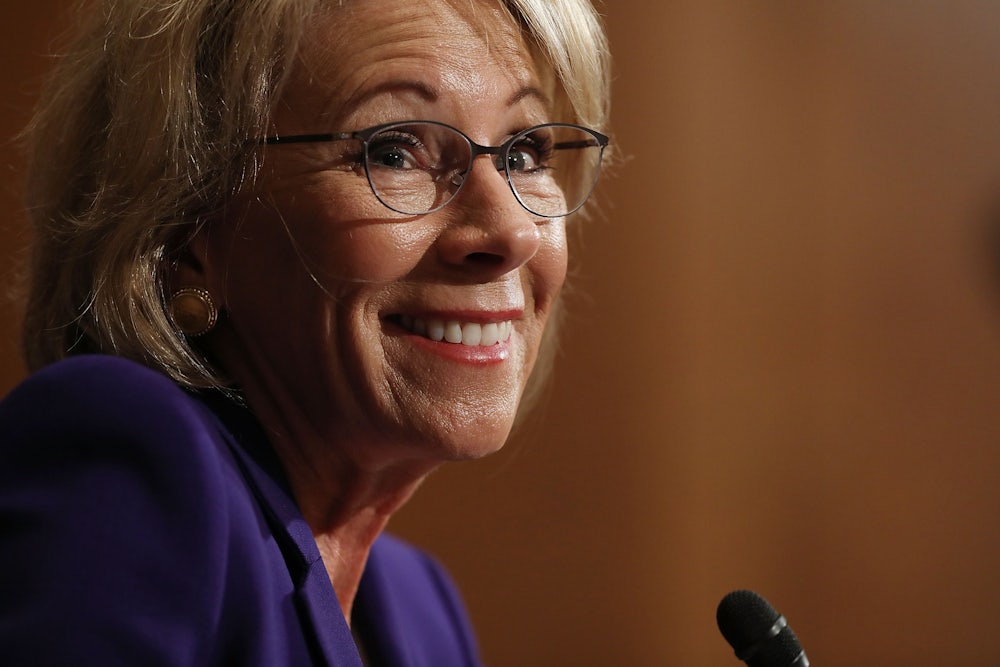The Washington Post reported on Wednesday that the Trump administration’s initial education budget would strip $10.6 billion from federal initiatives:
The administration would channel part of the savings into its top priority: school choice. It seeks to spend about $400 million to expand charter schools and vouchers for private and religious schools, and another $1 billion to push public schools to adopt choice-friendly policies.
Private schools would prosper at the direct expense of public schools, an outcome prophesied by critics of Trump and his Education Secretary, Betsy DeVos. If the Post’s report is an accurate assessment of the administration’s goals, public schools would lose funds for student enrichment—including Advancement Placement courses, arts education, and other options that prepare students for higher education. Wealthy families could finance supplemental activities, but lower-income families presumably could not.
Another proposal would allocate $1 billion in Title I dollars to a new program called Furthering Options for Children to Unlock Success, or FOCUS. Currently, school districts are allowed to concentrate funds in poorer schools, which are typically located in poor communities and therefore require more resources to educate students to an acceptable level. Trump’s budget would change that. According to the Post, FOCUS would grant funds to school districts that allow students to leave under-performing schools for better-performing alternatives. Those alternatives, of course, are typically located in wealthy areas. Students would take federal funds with them when they left, and that would deprive poorer public schools of money they can scarcely afford to lose. The result: reinforced racial and economic segregation.
If low-income students manage to enter college, they’ll be penalized all over again:
The administration is also seeking to overhaul key elements of federal financial aid. The spending proposal would maintain funding for Pell Grants for students in financial need, but it would eliminate more than $700 million in Perkins loans for disadvantaged students; nearly halve the work-study program that helps students work their way through school, cutting $490 million; take a first step toward ending subsidized loans, for which the government pays interest while the borrower is in school; and end loan forgiveness for public servants.
These cuts would lock low-income families in economic precarity. Students would have a harder time getting into, and then affording, college. It’s a drastic budget, and it may backfire: Congress barely confirmed DeVos. She’s since emerged as a reliable villain for grassroots activists looking to put a dent in the administration’s agenda. Trump and DeVos may as well draft slogans for their enemies. This budget is a blatant attack on the poor, and it deserves every bit of the outrage that will inevitably greet it.
